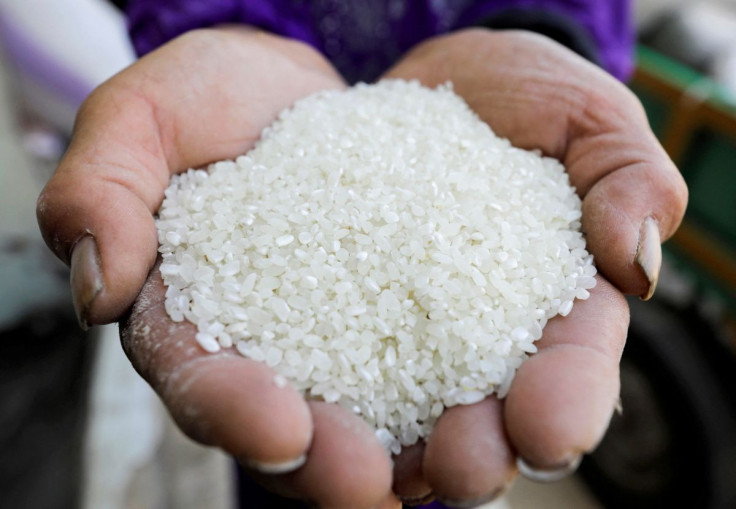World Faces Worst Global Rice Shortage In 20 Years, Decade-High Prices To Stay Until 2024

KEY POINTS
- A report predicted a shortfall of 8.7 million tons in global rice production for 2023
- An analyst suggested that countries would be forced to draw down their domestic stockpiles
- Weather woes in China and Pakistan and the war in Ukraine are being blamed for the global deficit
A research firm has warned that the world is on course for the worst rice shortage in two decades this year.
An April 4 report by Fitch Solutions Country Risk & Industry Research stated that global rice production is falling and that prices are soaring, which affect more than 3.5 billion people across the world.
Fitch Solutions' report forecasts a global rice shortfall of 8.7 million tons for 2022/2023, the biggest since 2003/2004, when global rice markets recorded a deficit of 18.6 million tons.
Fitch Solutions' commodities analyst Charles Hart warned that the shortfall in global rice production has led to an increase in prices in the market.
"At the global level, the most evident impact of the global rice deficit has been, and still is, decade-high rice prices," Hart told CNBC.
"Given that rice is the staple food commodity across multiple markets in Asia, prices are a major determinant of food price inflation and food security, particularly for the poorest households," he said.
The report predicted that the high prices would continue until 2024.
According to the report, the average price of rice is currently at $17.30 per hundredweight (cwt), and it would only ease to $14.50 per cwt next year. Cwt is a standard unit of weight used in certain commodities markets such as rice.
Oscar Tjakra, a senior analyst at global food and agriculture bank Rabobank, said that major rice importers such as Indonesia, Philippines, Malaysia and several African countries will see an increase in the cost of importing rice.
The global rice situation will also force countries to draw down their domestic stockpiles to stabilize market prices, Kelly Goughary, a senior research analyst at Gro Intelligence, suggested.
Goughary said countries experiencing high domestic food price inflation, including Pakistan, Turkey, Syria and some African countries, would suffer the most from the deficit.
Analysts blamed some major events on the short supply of rice, such as the ongoing Russian invasion of Ukraine, which drives up demand for rice. Ukraine, a major global exporter of wheat and barley, has had a hard time exporting its grains globally due to the Russian-led war.
Heavy monsoon rains and floods also affected rice production in China and Pakistan, two major rice-producing countries.
According to the U.S. Department of Agriculture, Pakistan's annual rice production plunged to 31% year-on-year due to severe flooding last year.
Another natural event that could dent rice production is El Niño, which is set to return this year, the World Meteorological Organization (WMO) said. El Niño occurs when water temperatures increase in the eastern Pacific, leading to higher-than-average precipitation in some regions and drier and warmer-than-average conditions in others.
Chris Hyde, a meteorologist at Maxar, told Reuters that El Niño could impact crop production in Australia, India and Southeast Asia.
Despite a gloomy year ahead for the global rice market, Fitch Solutions estimates that rice production could rebound in 2023/2024 and register a surplus by 2024/2025.

© Copyright IBTimes 2024. All rights reserved.






















